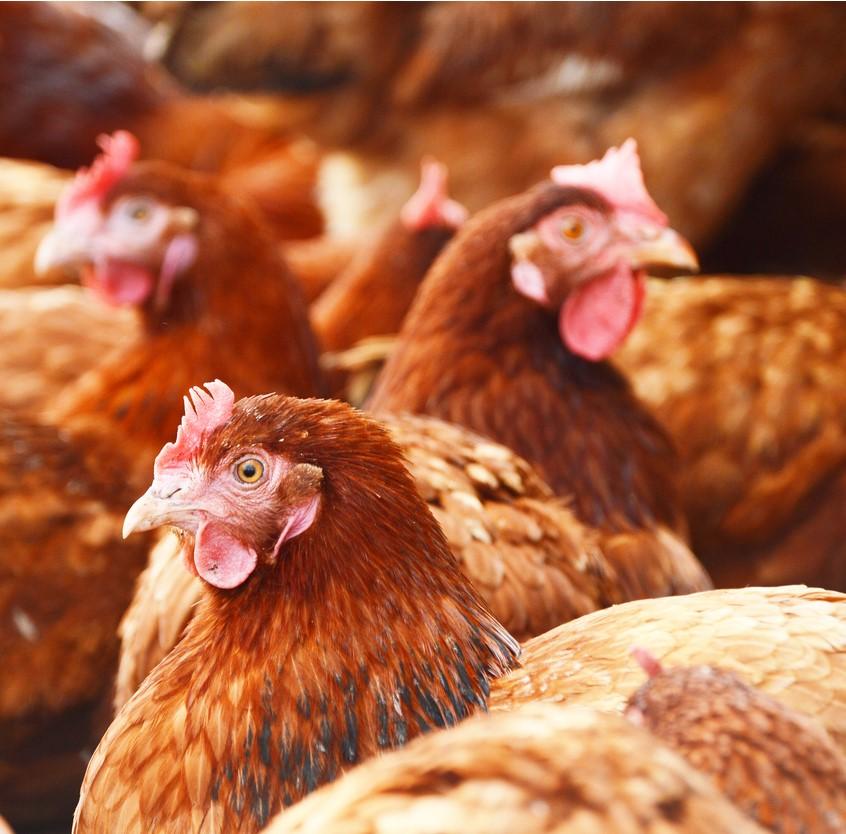Several countries reported new avian flu outbreaks, including two more H5N8 events at commercial poultry farms in Iraq, an H5 outbreak at a poultry farm in the Netherlands, and the first known H5N6 detection of the year in Vietnam.
In research developments, scientists from France who are exploring why H5N8 spread so quickly last winter at poultry farms in the southwest of the country found evidence that airborne transmission may have played a role.
Outbreaks in Iraq, Netherlands, Vietnam
In Iraq, which has reported ongoing H5N8 activity since early January, authorities reported new outbreaks in Diyala and Baghdad province that began on Feb 13 and Feb 14, respectively, according to a report yesterday from the World Organization for Animal Health (OIE). The investigation said the source of the virus was contact with wild species.
Between the two locations, the virus killed 91,350 of 170,000 susceptible birds, and the survivors were culled the control the spread of the virus.
Meanwhile, the Netherlands yesterday reported an H5 outbreak at a poultry farm in Oldekerk, according to a government statement translated and posted by Avian Flu Diary (AFD), an infectious disease news blog. So far, it's not known of the virus is highly pathogenic or if it is related to the detection of a new H5N6 reassortant implicated in an outbreak at a poultry farm in Biddinghuizen, about 75 miles south of Oldekerk, in December.
The report said the farm houses about 36,000 bird that are slated for culling, and authorities are testing other farms in the vicinity. Agriculture officials have imposed a poultry transport ban in a 1-kilometer zone around the affected farm.
Elsewhere, Vietnam reported a highly pathogenic H5N6 outbreak in backyard poultry in Hai Phong province in the north of the country, the agriculture ministry said in a Feb 24 report to the OIE. The report didn't say if the virus is the same H5N6 reassortant that turned up recently in South Korea and Japan.
The outbreak began on Feb 19, killing 1,200 of 3,200 susceptible birds. The remaining ones were destroyed as part of the response to the event. So far, the source of the virus hasn't been found. Vietnam reported its last H5N6 outbreak in October 2017.
Study points to airborne spread in France
In 2016 and 2017, H5N8 outbreaks struck several European countries, and especially hard-hit was southwest France, which is home to much of the country's foie gras production.
French scientists sought to know why the virus spread so quickly, even though farmers rapidly implemented control measures, especially in high poultry-farm–density areas. A team that looked into possible airborne spread reported its findings recently in Frontiers in Veterinary Science.
The study took place in the first 3 months of 2017 at chicken and duck farms in Landes and Pyrenees Atlantiques departments where H5N8 had been confirmed, but the birds hadn't yet been depopulated.
The researchers collected samples inside, just outside, and downwind from infected farms. They found H5 avian flu RNA in all of the samples they collected inside the barns, at external exhaust fans, and 5 meters from the poultry houses. For three of the five farms, they detected viral RNA in air samples collected between 50 and 110 meters away.
The results raise the possibility that exhaust air from infected barns could be an important source of environmental contamination, depositing infected dust on surfaces around the locations, creating fomites, the authors wrote. They added that downwind spread of the virus could infect other flocks located nearby.
"These findings are in accordance with the possibility of airborne transmission and question the procedures for outbreak depopulation," the group concluded, noting that confining the birds inside might not be enough to contain the virus and that culling processes that require birds to be loaded into containers outside the barns could generate emission of potentially infectious dust and aerosols.
See also:
Feb 25 OIE report on H5N8 in Iraq
Feb 26 AFD post
Feb 24 OIE report on H5N6 in Vietnam
Feb 13 Front Vet Sci abstract






















